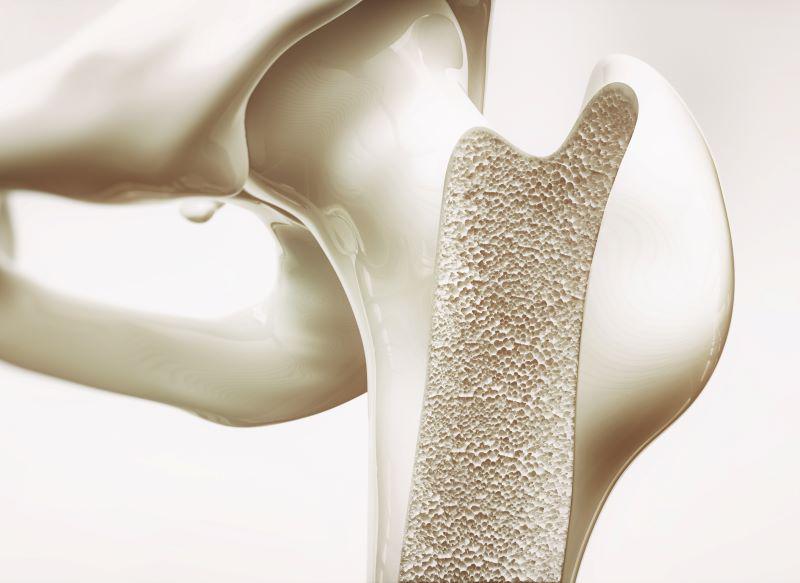Get Healthy!

- Cara Murez
- Posted February 27, 2023
Polluted Air May Speed Osteoporosis Bone Loss
Exposure to elevated levels of air pollutants is associated with bone damage in postmenopausal women, according to a new study that said the effects were most evident on the lumbar spine.
High levels of niitrogen oxides in air nearly doubled the effects of normal aging on bone density in the spine, said researchers from Columbia University's Mailman School of Public Health in New York City.
This study was the first to explore the effects of air pollution mixtures on bone outcomes, researchers said. It also was the first to explore the connection between air pollution and bone mineral density in postmenopausal women.
The researchers analyzed data from an ethnically diverse population of 161,000 postmenopausal women in a long-running U.S. women's health study. To estimate levels of exposure to pollutants, including PM10 (small air pollution particles), nitrogen monoxide, nitrogen dioxide and sulfur dioxide, researchers used participants' home addresses.
Traffic exhaust and emissions from power plants are major producers of nitrogen oxides.
Bone density was measured at enrollment in the study and after one, three and six years using dual-energy X-ray absorptiometry commonly known as a DEXA scan. The scans included whole-body, total hip, femoral neck and lumbar spine.
Researchers said the magnitude of the effects of nitrogen oxides on lumbar spine density would amount to 1.22% annual losses. That's nearly double the annual effect of age on any of the anatomical sites evaluated, they noted.
The researchers suspect these effects occur through bone cell death by way of oxidative damage and other mechanisms.
"Our findings confirm that poor air quality may be a risk factor for bone loss," said first author Dr. Diddier Prada, an associate research scientist at the Mailman School.
"For the first time, we have evidence that nitrogen oxides, in particular, are a major contributor to bone damage and that the lumbar spine is one of the most susceptible sites of this damage," Prada said in a Columbia news release. The study only found an association between pollution levels and bone density, and not a cause-and-effect link.
About 2.1 million osteoporosis-related bone fractures occur each year, according to the study. These result in up to $20.3 billion in annual direct health costs.
About 80% of the 10 million Americans with osteoporosis are women. Women who have gone through menopause are at higher risk: About 1 in 2 women over 50 experience a bone fracture because of osteoporosis.
"Improvements in air pollution exposure, particularly nitrogen oxides, will reduce bone damage in postmenopausal women, prevent bone fractures, and reduce the health cost burden associated with osteoporosis among postmenopausal women," said lead author Dr. Andrea Baccarelli, chair of environmental health sciences at Columbia. "Further efforts should focus on detecting those at higher risk of air pollution-related bone damage."
Study findings were recently published in the journal eClinicalMedicine.
More information
The U.S. National Institutes of Health has more on osteoporosis.
SOURCE: Columbia University, Mailman School of Public Health, news release, Feb. 22, 2023









